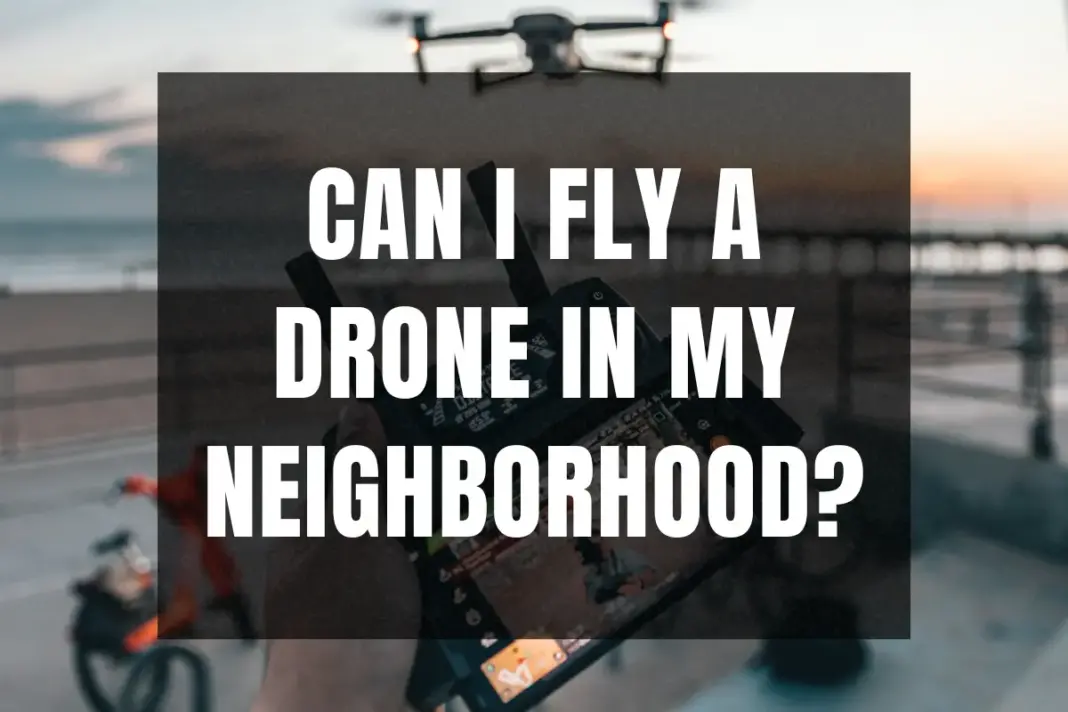Drones have increasingly become popular household gadgets, especially with the rise in affordability and diversity of features. Whether you’re a hobbyist photographer or just looking for a fun way to spend an afternoon, the appeal of flying a drone is undeniable. One question that often arises, especially for new drone owners, is: “Can I fly a drone in my neighbourhood?” Let’s dive into this question’s regulatory, privacy, and etiquette aspects.
1. Regulatory Framework
Before you even think about taking off, it’s crucial to understand the regulations set by aviation authorities.
Federal Aviation Administration (FAA) Guidelines:
For those in the U.S., the FAA sets the rules for drone flights. While regulations can evolve, some of the basic guidelines include:
- Drones must be registered if they weigh between 0.55 lbs and 55 lbs.
- Always maintain a visual line of sight with your drone.
- Avoid flying over groups of people, public events, or stadiums.
- Stay away from airports and be aware of airspace restrictions.
Local Laws:
Always check your state and local laws concerning drone flights. Some municipalities have strict regulations that might prohibit or restrict flying drones in certain areas, including neighbourhoods.
2. Privacy Concerns
Flying a drone in your neighborhood isn’t just about adhering to federal and local laws; it’s also about respecting the privacy of your neighbours.
- Avoid Windows and Backyards: Even if you don’t intend to spy, your drone’s camera might inadvertently capture private moments if you fly near windows or over backyards.
- Noise Concerns: Drones can be noisy, disturbing the peace in a quiet neighbourhood.
3. Safety First
It’s easy to get lost in the excitement of flying your drone, but safety should always be your priority.
- Avoid Trees and Power Lines: Navigating a residential area means facing obstacles. Ensure your drone is equipped with obstacle detection, or fly it at a height where it won’t get entangled.
- Beware of Animals: Pets, particularly dogs, might be alarmed or try to chase your drone. This could be dangerous for the animal and may damage your equipment.
4. Etiquette and Neighborly Conduct
Being considerate goes a long way. If you’re planning to fly a drone regularly in your neighborhood:
- Inform Your Neighbors: Before starting, tell your neighbors about your intentions. This reduces potential concerns and misunderstandings.
- Choose Appropriate Times: Due to noise concerns, early mornings or late evenings might not be the best times.
- Limit Flight Duration: Continual flights can be annoying. Limit how long and how often you fly.
5. Benefits of Choosing Alternative Locations
While flying in your neighborhood might be convenient, sometimes opting for an alternative location can offer a more fulfilling experience.
- Parks and Open Spaces: These locations reduce the risk of privacy invasion and provide a more expansive space to explore your drone’s capabilities.
- Join a Drone Club: Connecting with other drone enthusiasts can provide insights, and clubs often have designated areas for flying.
6. Facing Challenges and Complaints
Despite your best efforts, you might face challenges or complaints. It’s essential to handle these situations with grace.
- Open Dialogue: If a neighbor expresses concerns, listen actively and assure them of your intentions. Sometimes, a simple conversation can clear up misconceptions.
- Stay Updated: Rules and perceptions around drones are continuously evolving. Stay updated on local regulations and community sentiments to fly responsibly.
Conclusion
Can I fly a drone in my neighborhood?” isn’t just about legalities; it’s a mix of regulation, privacy, safety, and etiquette. While the thrill of flying a drone is unmatched, it’s crucial to do so responsibly. Being considerate of your surroundings and neighbors, staying informed about the rules, and occasionally opting for alternative flying locations can ensure you enjoy your drone without stepping on any toes. Remember, responsible droning today can pave the way for more acceptance and fewer restrictions in the future.

